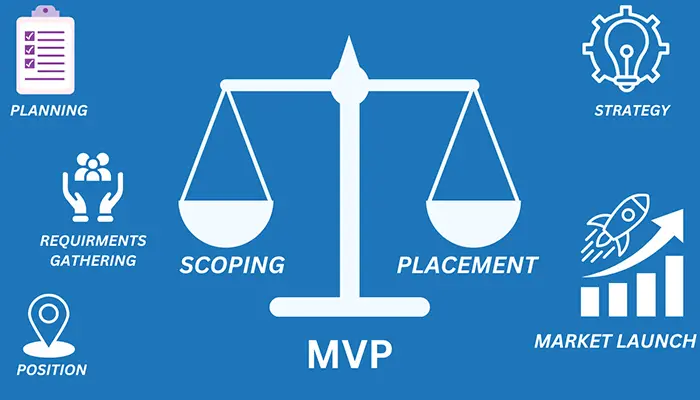Turning an idea into a real, testable product starts with a Minimum Viable Product (MVP)—a version with only the core features needed to validate assumptions and gather user feedback. To do this effectively, you must decide what to include and what to leave out. At Azul Arc, we focus on two key principles for MVP development: Scoping and Placement.
Scoping: Defining MVP Boundaries
Scoping is about selecting essential features that validate your hypothesis. It requires balancing user needs, business goals, and available resources.
Key Steps for Scoping:
- Define the Problem & Success Criteria: What core issue does your MVP solve? Success should be measurable—testing user behavior, validating feasibility, or gauging market demand.
- Prioritize Features: Categorize features into:
- Should-haves – Important but not critical
- Must-haves – Essential for core functionality
- Nice-to-haves – Can wait for future updates
- Reduce Complexity: Optimize development by eliminating, downgrading, combining, or offloading features that add unnecessary effort or redundancy.
Placement: Prioritizing Feature Rollout
Placement determines the order in which features are developed and released to maximize impact and usability.
Key Steps for Placement:
- Focus on Core User Experience: Prioritize features that help users start using the product quickly.
- Consider Technical Feasibility: Some features may be desirable but resource-intensive—launch with simpler solutions first.
- Adapt Based on Feedback: Be flexible in adjusting feature order based on real-world usage and insights.
- Ensure Quick Feedback Loops: Features that provide immediate insights should be prioritized to refine assumptions early.
Applying Scoping & Placement to MVP Prioritization
- Object Prioritization
- Goal: Define the right set of objects based on need, budget, and time constraints.
- Scoping: Remove unnecessary elements, combine similar ones, and leverage existing solutions instead of reinventing them.
- Placement: Arrange objects based on importance to users and business impact.
- Relationship Prioritization
- Goal: Ensure a logical navigation structure that reflects priority.
- Scoping: Remove redundant relationships and refine contextual links.
- Placement: Arrange relationships in a way that makes sense for usability.
- Call-to-Action (CTA) Prioritization
- Goal: Define the right placement for CTAs to improve user engagement.
- Scoping: Phase out unnecessary CTAs and prioritize based on user needs.
- Placement: Place CTAs in intuitive locations, such as:
- Global Navigation – For key, frequently used actions
- Top-Level List – For object-specific actions
- Nested Views & Detail Pages – For contextual actions like download or export
- Attribute Prioritization
- Goal: Determine when and where attributes should be introduced.
- Scoping & Placement: Use the same prioritization process as objects and CTAs.
Balancing Scoping & Placement for a Successful MVP
A well-planned MVP balances choosing the right features (scoping) and releasing them in the right order (placement). By following these principles, you can build a focused, effective MVP that delivers value early while remaining adaptable to user needs.
